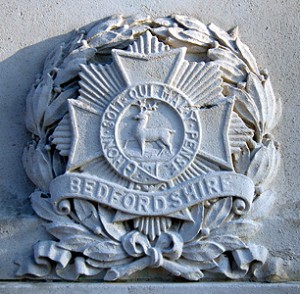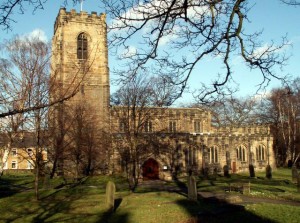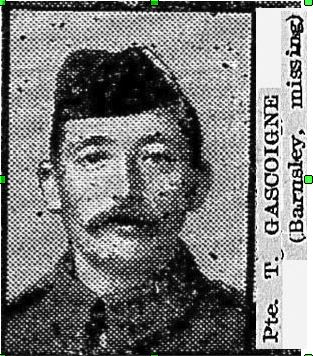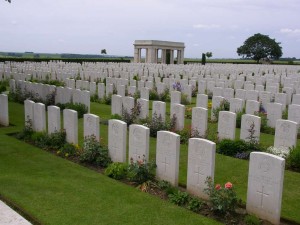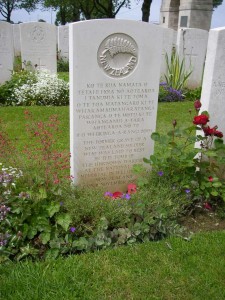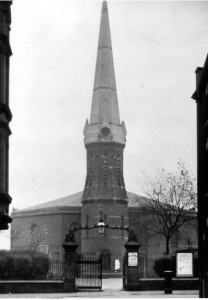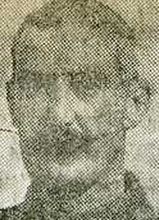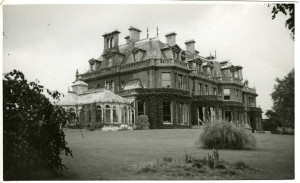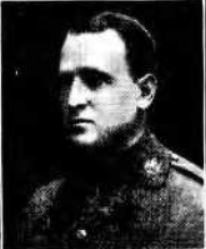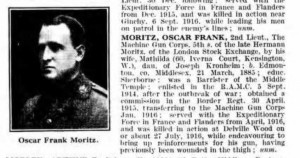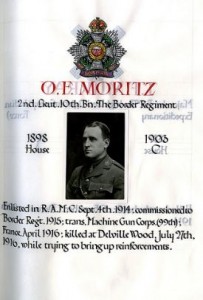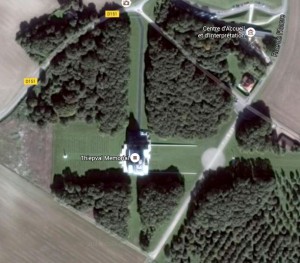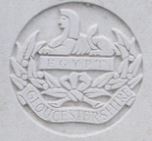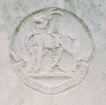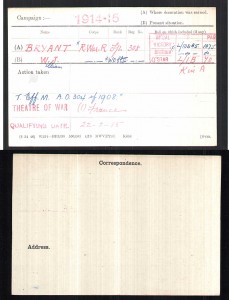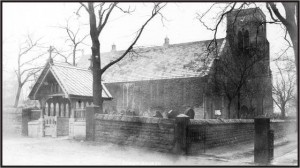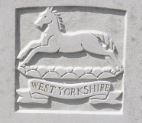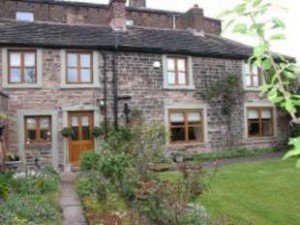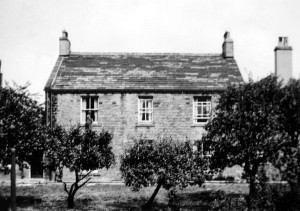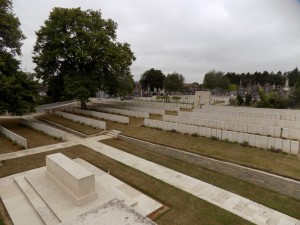Somme Centenary Commemoration
BARNSLEY AND BEYOND by Guest Blogger, Jane Ainsworth
I was inspired to organise a Somme Centenary Commemoration by the many Old Boys from Barnsley Holgate Grammar School who had served on the Somme in 1916:
one had died in the preparations for the Big Push
ten of them were killed in action on 1 July 1916 with others wounded that day
18 died during the rest of Somme Offensive in 1916
at least 12 survived fighting on the Somme to die later in the war.
Their individual stories are told in detail in my book Great Sacrifice: the Old Boys of Barnsley Holgate Grammar School (published by Helion & Company) and this also includes two accounts by men of their experiences (John Middleton Downend and Harold Marshall) and two poignant last letters (Francis John Potter’s to his parents and James Stuart Swift’s to his wife).
I had visited the outdoor chapel at Silverwood Scout Camp in Silkstone in 2013 while researching war memorials for the project I founded to create a Barnsley Roll of Honour. The site was originally called Newhall Camp, where the Barnsley Pals were billetted and trained, and there is a small sandbag memorial to the Pals in the chapel. As the Barnsley Pals had participated in the Somme Battles of 1916, this seemed the ideal venue for a centenary commemoration on 1 July 2016.
Although I wanted to remember all of the men who served in the two battalions of the Barnsley Pals (13th and 14th York and Lancaster Regiment), many of whom were killed in action on the First Day of the Somme, I did not want to limit my commemoration in any way. I invited people from Barnsley and surrounding areas to attend and to nominate relations they would like to have remembered at this event who had served on the Somme, wherever they had lived and whether they had died or survived. I publicized that:
The aim is to remember ALL those who participated in the Somme Battles of 1916, throughout 1916 and in whatever capacity.
We will pay special tribute to the massive number of troops who were killed in preparations for the ‘Big Push’, on the First Day of the Somme and the 140 days afterwards in many different Regiments, Battalions and other services.
However, we will not forget that many more men were wounded, some died later in the war and others survived, but all involved suffered psychological trauma from their experience.
I invited various people to be involved and I received invaluable support and practical help from the Scouting volunteers, Horizon Community College and Silkstone Primary School. I was extremely grateful to Paul Unsworth and team for allowing me to use the site free of charge as I was not obtaining any funding. (We held a collection towards the upkeep of this important site and, thanks to the generosity of those attending, I was able to donate over £80).
I was very lucky that the Scouts had erected a new building with kitchen facilities this spring so I was able to use the Billingham Centre for displays and refreshments. The event took place from 1pm to 3pm and displays included the history of the site (including the report and photographs from a survey carried out by Elmet Archaeological Services in 2015 with some new survey results from Master’s student Andrew Edwards plus details about its occupation by the Barnsley Pals), background to the Somme Battles and details of many men to be remembered. The DVD of original film footage taken on the Somme in 1916 was also available for people to watch.
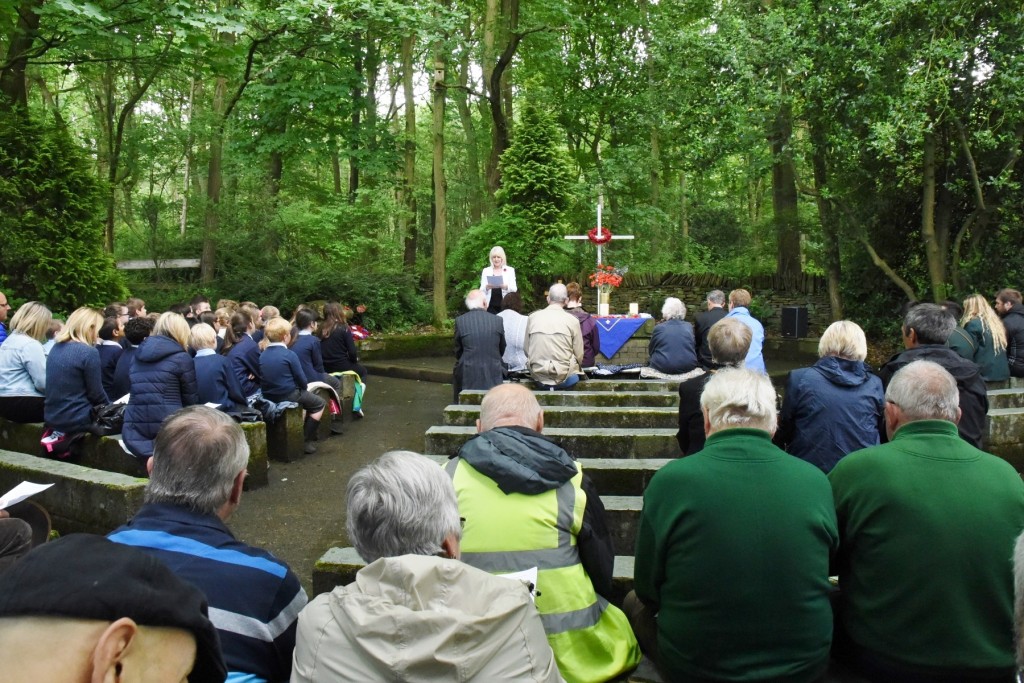
Somme Centenary Commemoration © Barnsley chronicle
The secular Remembrance Service was in the outdoor chapel from 2pm until about 2.30pm and it involved readings interspersed with music. I placed a vase of poppies and three large candles on the altar, which was covered in a white cloth, poppies and photographs of men who served on the Somme. A CD of military bagpipe music was played as people assembled then, after welcoming everyone, a replica WW1 whistle was blown before background information was provided. As the number of men killed is too great to comprehend or remember everyone as individuals, the diverse and poignant stories of 12 families affected were read by three relations (Adrienne McEnhill, Deborah Toft and Ian Potter), Tom West and five students from Horizon – twins Lewis and Reece Smith (Marine Cadets, who also played bugles), Emily Linford (Army Cadet), Ethan Hepworth and Harry Houlston. Alex Simon’s Class 5 from Silkstone Primary School sang verses from two songs popular in the First World War: It’s A Long Way To Tipperary and Pack Up Your Troubles. Lewis and Reece sounded the Last Post then Reveille after a minute’s silence and the laying of two wreaths then my husband Paul had to thank everyone for participating and attending as my emotions had overwhelmed me. People were offered a Peace Baby as they left the chapel – after the war ended in 1918, Jelly Babies were packaged as Peace Babies.
The outdoor chapel was very atmospheric with the overhanging beech trees and very dark skies. We were fortunate that we only had a light shower but everyone had come prepared with waterproofs and umbrellas. Unfortunately, we were unable to video the service because of the wet conditions; we had hoped to show it to those relations who were unable to attend – several were actually visiting the Somme for 1 July.
The following men participated in the Somme Battles from the families remembered in the service; their dates of death are shown in brackets if they died during the First World War.
Arthur Almond (1 July 1916, aged 24)
Stanley Bell (8 August 1916, aged 26
John Middleton Downend (24 November 1917, aged 29)
Christopher Gascoigne (1 July, aged 34)
Bertrand Harrison (15 September 1916, aged 33)
George Alfred Guest Hewitt (27 November 1917, aged 24)
Sidney Nicholson (10 October 1916, aged 26) and Ernest Nicholson
Thomas William Penaluna
Francis John Potter (1 July 1916, aged 23)
Percy Sawyer and Francis Sawyer Harold Skelley (7 February 1919, aged 24)
Llewellyn Weigh and John Weigh (5 September 1917, aged 23)
It was an enormous amount of ‘work’ for me but very satisfying on a personal level. Despite not being able to rehearse together, the Remembrance Service went very smoothly and everyone was impressed with how all of the children performed.
I received a lot of very positive feedback about the whole event and one relation, John Camm, emailed me to say:
“Just wanted to say thank you for the Service on Friday. Listening to the stories of the local men who fought on the 1st July was very moving.
“I especially liked the fact that their stories were read out by the local school children. It was great to see them taking an active part in the commemorations. It gives us hope that the Somme and the First World War will be remembered for a very long time to come.
“I did have a look at the displays. They were excellent. When you read one soldier’s tragic story and then think that it was repeated 20,000 times in one day, it’s very powerful”.
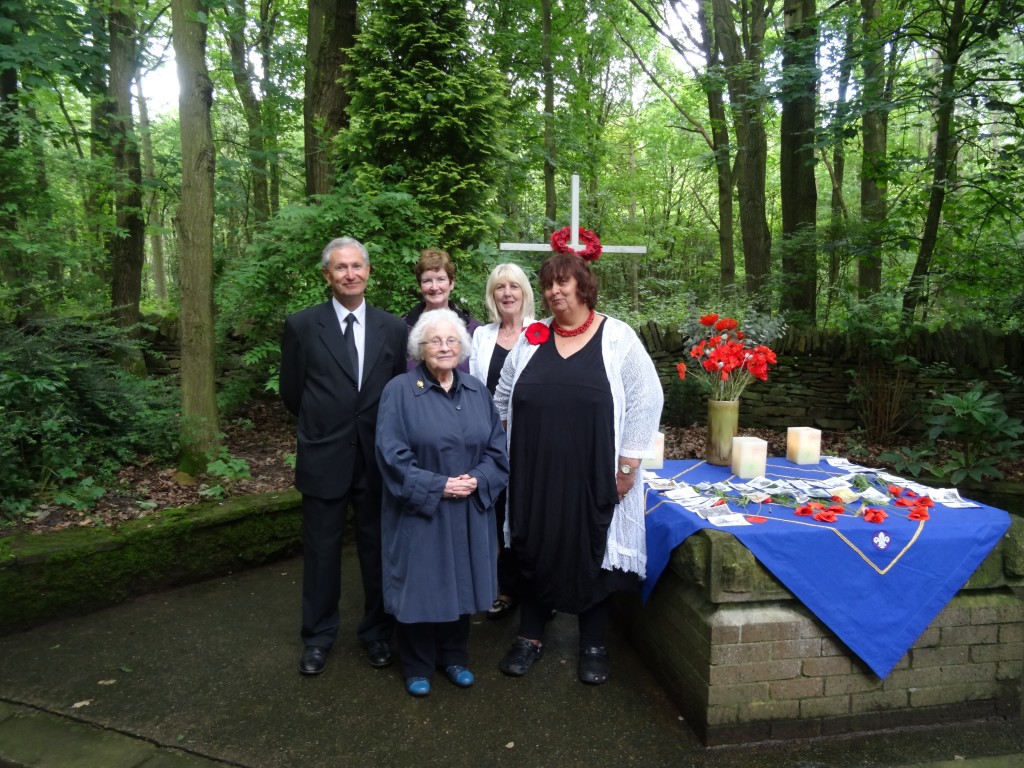
Somme Centenary Commemoration © J Ainsworth
